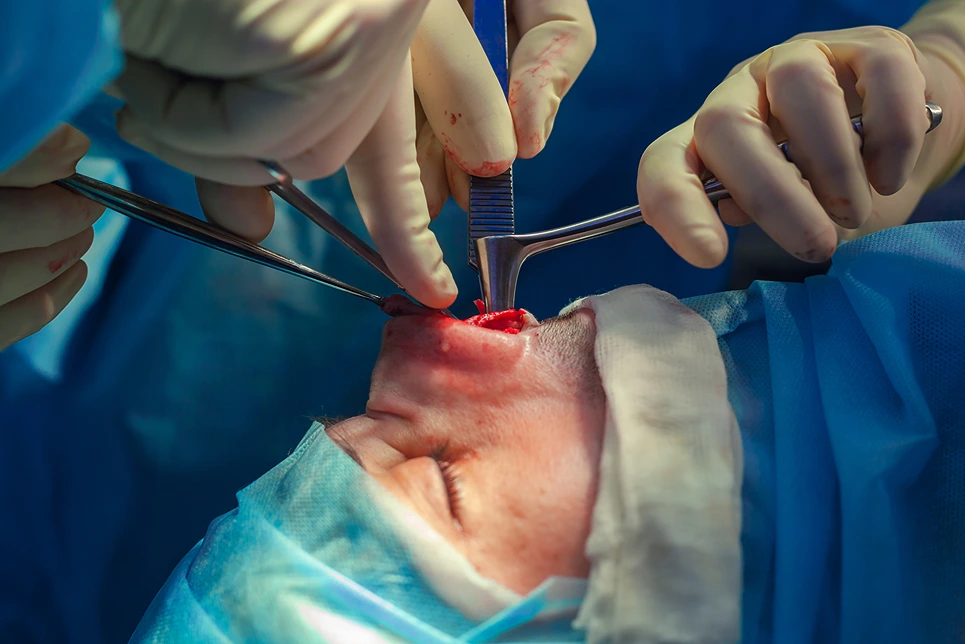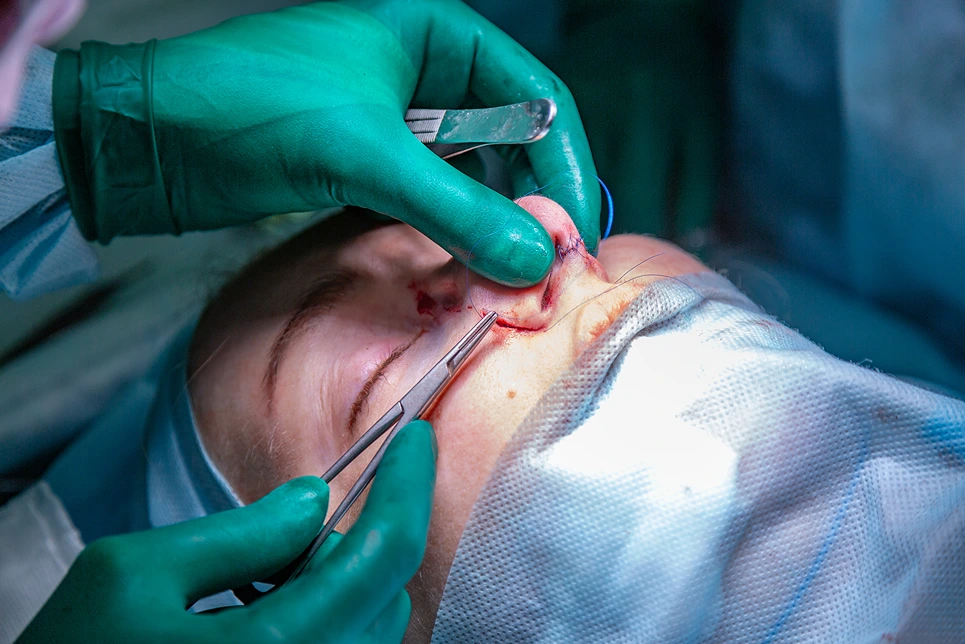

Mohs surgery is a highly effective technique for removing skin cancers, particularly on sensitive areas like the nose. If you're scheduled for this procedure or have recently undergone it, you may be wondering what to expect during the recovery process.
This comprehensive guide will walk you through the healing journey, potential complications, and best practices for optimal recovery.

In the hours immediately following your Mohs surgery, it's crucial to follow your surgeon's instructions carefully.
Your surgical site will be covered with a pressure dressing to minimize bleeding and swelling. You may experience mild to moderate discomfort, for which your doctor will likely recommend over-the-counter pain relievers.
Swelling and bruising are normal reactions and typically peak within 48-72 hours post-surgery. It's important to take it easy and avoid strenuous activities for the first day or two.
Proper wound care is essential for preventing infection and promoting healing.
Your doctor will provide specific instructions, which may include keeping the wound clean and dry, changing dressings as directed, applying antibiotic ointment if prescribed, and avoiding direct water contact on the surgical site.
During the first couple of weeks, you'll likely experience continued swelling and possible bruising.
Mild discomfort or itching at the surgical site is common, and a scab will form over the wound. It's crucial to avoid picking at the scab, as this can interfere with healing and increase the risk of scarring.
By the third and fourth weeks, you should notice reduced swelling and bruising. The scab will fall off naturally, revealing new, pink skin forming at the surgical site.
Over the next few months, the surgical site will continue to improve in appearance. Scar tissue will begin to soften and fade, and you may experience occasional itching or tightness.
Full healing can take up to a year or more. During this time, scar tissue will continue to remodel, and the surgical site may gradually blend more with surrounding skin. Some patients may consider scar revision procedures if necessary.

Most patients experience minimal pain after Mohs surgery. However, if you do have discomfort, you can:
While Mohs surgery is designed to minimize scarring, some degree of scarring is inevitable. To promote optimal healing, follow your doctor's wound care instructions carefully, protect the surgical site from sun exposure, and consider using silicone-based scar treatments once the wound has fully healed.
To reduce the risk of infection, keep the wound clean and dry, wash your hands before touching the surgical site, and avoid applying makeup or other products to the area until it's fully healed.

Depending on the size and location of the tumor removed, you may require reconstructive surgery.
This can involve primary closure (simple stitching of the wound), skin flaps (using nearby skin to cover the defect), or skin grafts (taking skin from another part of the body to cover the wound). Your surgeon will discuss the best reconstructive options for your specific case.
While complications are rare, it's important to contact your healthcare provider if you experience:
After Mohs surgery, it's crucial to protect your skin from further sun damage. Use a broad-spectrum sunscreen with SPF 30 or higher daily, wear protective clothing, including wide-brimmed hats, and avoid direct sun exposure during peak hours (10 am to 4 pm).
Patients who have had skin cancer are at higher risk for developing new cancers. Schedule regular follow-up appointments with your dermatologist for skin checks.
The initial healing process typically takes 4-6 weeks, but complete healing and scar maturation can take up to a year or more.
Not necessarily. Many patients achieve excellent cosmetic results with Mohs surgery alone. However, some may opt for additional cosmetic procedures to further improve the appearance of the surgical site.
Your surgeon will provide specific instructions, but generally, you'll need to avoid putting pressure on the surgical site for several weeks. This may mean using tape or other methods to keep glasses off the nose while healing.
Mohs surgery has a very high cure rate, typically 98-99% for basal cell carcinoma and 97-98% for squamous cell carcinoma.
Recovering from Mohs surgery on your nose requires patience and diligent care. By following your doctor's instructions and understanding what to expect during the healing process, you can promote optimal recovery and achieve the best possible outcome.
Remember that every patient's experience is unique, and don't hesitate to reach out to your healthcare provider with any concerns or questions during your recovery journey.
If your desired appointment type or preferred provider is unavailable online, kindly call (978) 525-0100 for Peabody, MA and (603) 742-5556 for all New Hampshire locations. Alternatively please feel free to send us your request via the patient portal, or via email at info@dermskinhealth.com
*For medical dermatology appointments in MA please dial (978) 525-0100 or fill out the appointment request form above.